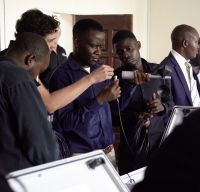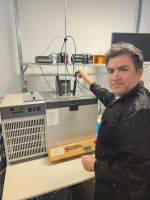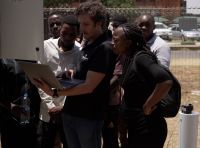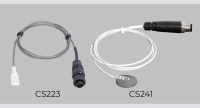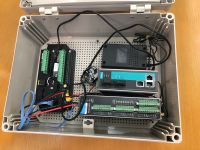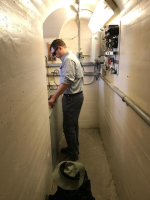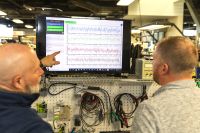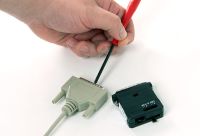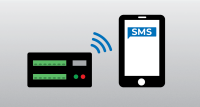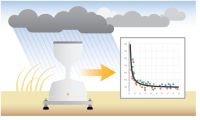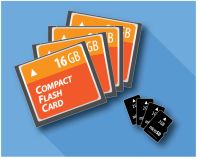El Blog de Campbell Scientific Sugerencias técnicas y recomendaciones de expertos
Displaying 21 - 40 of 161 articles
How Do You Put Learning into Action?
Autor: Vim Mistry | Última actualización: 03/11/2024 | Comentarios: 0
While continuous learning in the field of environmental monitoring is important, it’s even more critical to put that learning to practical use. Understanding the benefits for both employees and organisations to stay up to date on technology, expand expertise, and improve performance is one thing.... leer másA Closer Look: Resolving Dam Data Discrepancies
Autor: Eric Schmidt | Última actualización: 03/05/2024 | Comentarios: 0
Did you read our Southwest: Solving the Mystery of Erroneous Dam Monitoring Data case study? Want to get some more details? In this article, we’re going to take a closer look at that case study. If you haven’t read the case study yet, please do... leer másAspectos Esenciales de la Calibración: Importancia
Autor: Michael Jacobs | Última actualización: 03/04/2024 | Comentarios: 2
En el mundo de la medición y adquisición de datos, garantizar la precisión de los instrumentos es primordial. La calibración regular es esencial para mantener la integridad de tus mediciones y proteger tus operaciones. Pero ¿qué es exactamente la calibración y por qué es tan... leer más4 Reasons Why Continuous Learning Is Critical for Environmental Monitoring
Autor: Ramatoulaye Nabi | Última actualización: 02/01/2024 | Comentarios: 0
In the ever-evolving landscape of environmental monitoring, staying ahead of the curve is not just a luxury but a necessity. As technology advances at an unprecedented pace, organisations must equip their employees with the skills and knowledge to effectively use emerging tools and navigate the... leer másHow to Easily Replace and Update a CS223 Sensor Head
Autor: Ajay Singh | Última actualización: 01/15/2024 | Comentarios: 0
Campbell Scientific’s CS223 Pt-1000 Class A, Back-of-Module Temperature Sensor (discontinued effective 31 October 2023) has been replaced by the CS241 Pt-1000 Class A, Back-of-Module Temperature Sensor. When needed, you can replace the CS223 sensor head with a CS241 head without having to replace the entire... leer másWhy Is the CR6 the Preferred Automated Monitoring Platform for Geotechnical Applications Worldwide?
Autor: Michael Adams | Última actualización: 01/08/2024 | Comentarios: 0
If you’re not using a CR6 Automated Monitoring Platform for your geotechnical application, you may be missing out on some key benefits that could help ensure the success of your instrumentation and monitoring network. Based on my 30 years of experience with data-acquisition systems, I’ll... leer másTips to Troubleshoot and Optimize Large RF Networks: Part 2
Autor: Nathanael Wright | Última actualización: 12/20/2023 | Comentarios: 1
In this blog article, I’ll share with you the next five tips (6 through 10) that you can use to help troubleshoot your radio frequency (RF) networks. This is the second article in our three-part series. If you missed my first article or want to... leer másHow the DustVue Can Help You Get USABLE Soiling Data
Autor: Ben Todt | Última actualización: 12/04/2023 | Comentarios: 0
Should you be concerned about the impact of soiling or fouling on your photovoltaic (PV) power plant performance? Did you know that in a recent estimate, more than US$6 billion of annual revenue is lost because of diminished power generation at PV facilities due to... leer másTips to Troubleshoot and Optimize Large RF Networks: Part 1
Autor: Nathanael Wright | Última actualización: 10/31/2023 | Comentarios: 0
In this blog article, and the next two in the series, I’m going to share with you some tips you can use to help troubleshoot your radio frequency (RF) networks. In large RF networks, it can be challenging to achieve reliable spread-spectrum radio communications. (For our... leer másCómo obtener medidas precisas de cuerda vibrante con cables muy largos
Autor: Nathanael Wright | Última actualización: 10/17/2023 | Comentarios: 0
Typically, when you use long cable lengths for your vibrating wire measurements, you experience a weaker signal with a greater chance of interference. So, how do you overcome this challenge and improve your measurement quality? Keep reading to find out. At Campbell Scientific, our vibrating wire... leer másLas 5 cosas que el VWAnalyzer puede hacer por usted
Autor: Jacqalyn Maughan | Última actualización: 08/29/2023 | Comentarios: 0
You may not realize just how helpful our handheld instrumentation can be—especially when it makes it easy for you to test your vibrating wire sensors, saving you time and money if a failed sensor is identified prior to installation. Let’s dive deeper into the five... leer másUso de VSPECT® para verificar cuerda vibrante: ¿sensor estropeado o datos erróneos?
Autor: Jacqalyn Maughan | Última actualización: 04/06/2023 | Comentarios: 0
Have you ever thought your bad vibrating wire sensor measurements were caused by erratic or erroneous data? You may be surprised to learn that data issues may not be the cause. If you are using a data-acquisition system other than one of the Campbell Scientific... leer másTroubleshooting Vibrating Wire Piezometers
Autor: Nathanael Wright | Última actualización: 03/28/2023 | Comentarios: 0
Campbell Scientific vibrating wire measurement hardware, with our patented VSPECT® technology, offers a distinct advantage over all other vibrating wire measurement systems. Unlike non-Campbell Scientific vibrating wire interfaces that use pulse counting to derive vibrating wire frequency, Campbell Scientific's VSPECT vibrating wire measurement products use spectral... leer másDiagnosticar fácilmente problemas de conexión en el modem celular CELL215
Autor: Nathanael Wright | Última actualización: 01/12/2023 | Comentarios: 4
Campbell Scientific’s CELL2XX cellular modems (CELL205, CELL210, CELL215, CELL220, and CELL225) are commonly used as a low-power alternative to the many industrial cellular solutions available on the market today and are built to easily interface with all Campbell Scientific data loggers and data-acquisition systems. Occasionally,... leer másHow to Generate SFTP Keys Easily
Autor: Nathanael Wright | Última actualización: 09/12/2022 | Comentarios: 8
As organizations throughout the world continue to strengthen their network and data communications systems to counter increased security threats, we’ve noticed a trend: there’s been an increase in the number of Campbell Scientific customers setting up secure communications between their data loggers and other devices. SSH... leer másHow to Test COM Ports and Short Haul Modems
Autor: Bruce Smith | Última actualización: 04/15/2021 | Comentarios: 2
Has an electrical surge or other event made you concerned that your COM port or short haul modem may not be operating properly? Do you know how to test for this? In this brief article, we’ll look at some simple tests you can perform to... leer másDebería saber: Mejoras en envío de SMS con instrucción SMSSend()
Autor: Dana Worley | Última actualización: 04/09/2021 | Comentarios: 0
Do you currently use SMSSend() in a CRBasic data logger program to send SMS messages through a Campbell Scientific CELL2XX internal or external cellular module? There are some things you should know about the recent improvements we made that affect how SMSSend() works. With the release... leer másWhy Do We Need an Algorithm for Rainfall Intensity Correction?
Autor: Dirk Baker | Última actualización: 03/05/2021 | Comentarios: 0
In this article, I’ll explain how errors can occur when measuring the precipitation amount, discuss a correction approach, and demonstrate how an algorithm can be used to design high-quality tipping bucket rain gauges. Introduction Liquid precipitation (rain) is at once one of the simplest measurements mechanically and... leer másUtilice una tarjeta de memoria, pero no cualquiera !
Autor: Carolyn Ivans | Última actualización: 10/23/2020 | Comentarios: 0
You may already know that you can add external data storage to your data logger with flash-memory cards. But do you know what kind of card you need—or if you even need one? In this article, I’ll answer these and other memory card questions. In... leer másAnswers to 5 Common Questions about Storing Data to Memory Cards
Autor: Carolyn Ivans | Última actualización: 10/22/2020 | Comentarios: 5
You may use CompactFlash or microSD memory cards for external storage of your data logger data, but are you using your cards correctly? In this article, I’ll answer some common questions you may have about memory card usage. Recommended for You: If you haven’t done... leer más